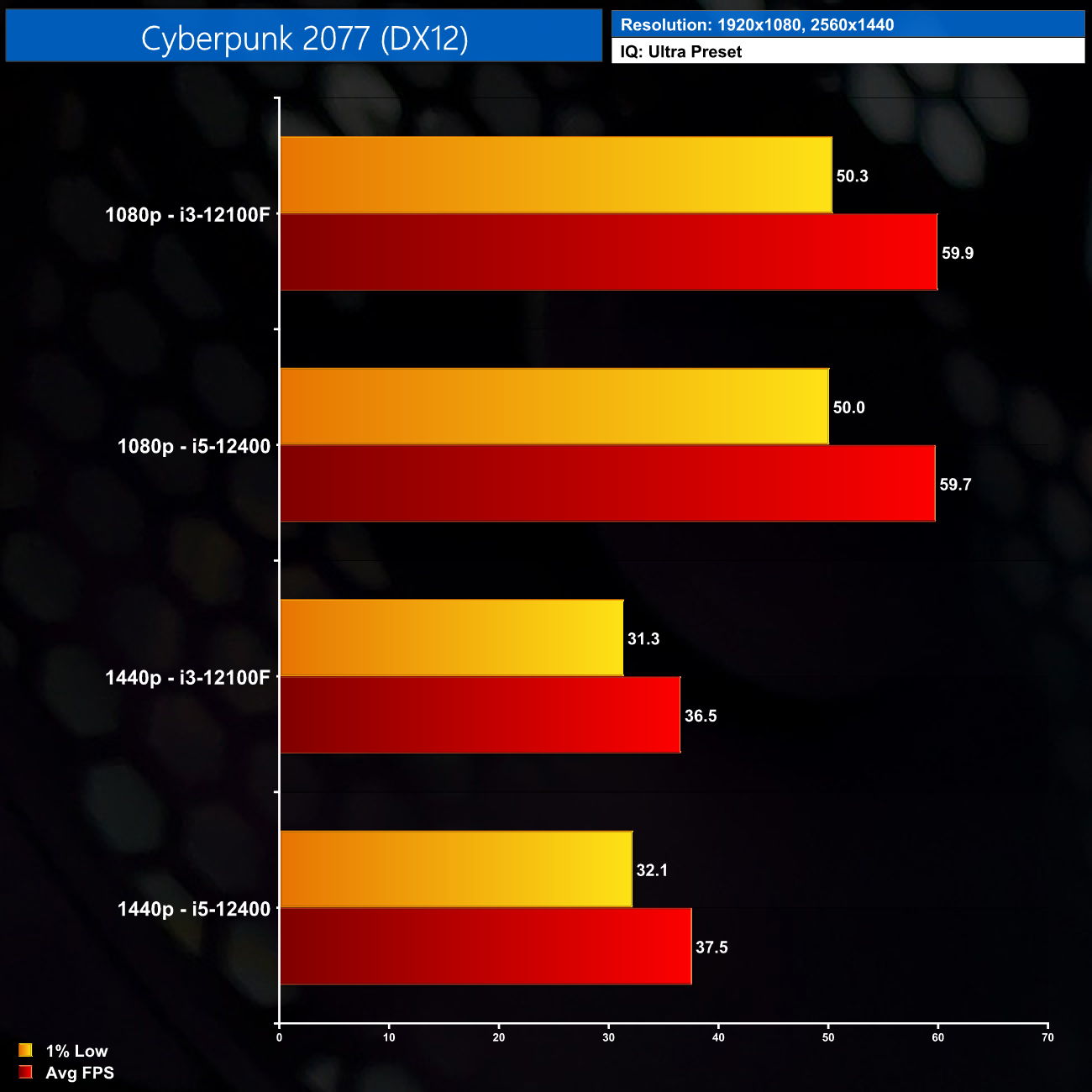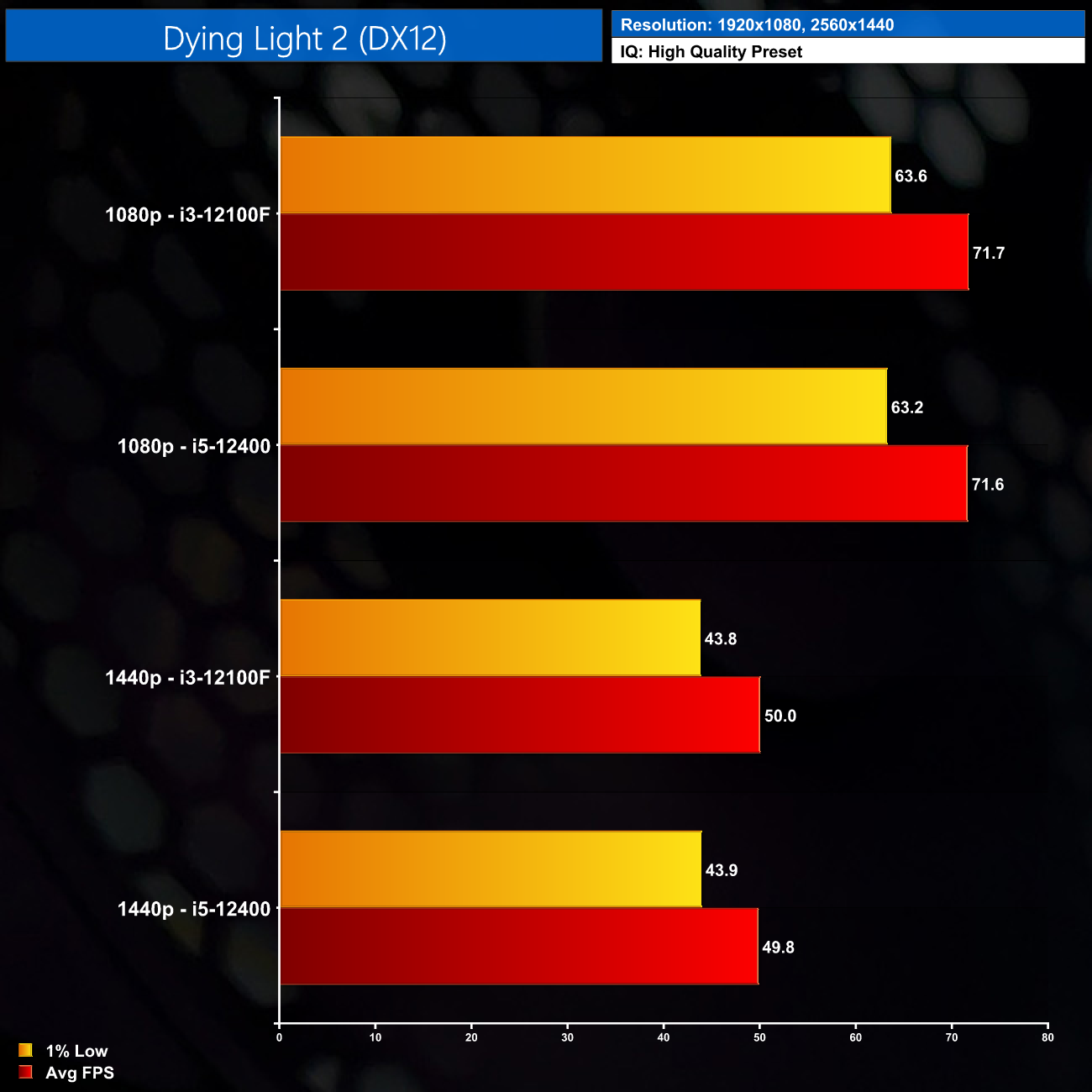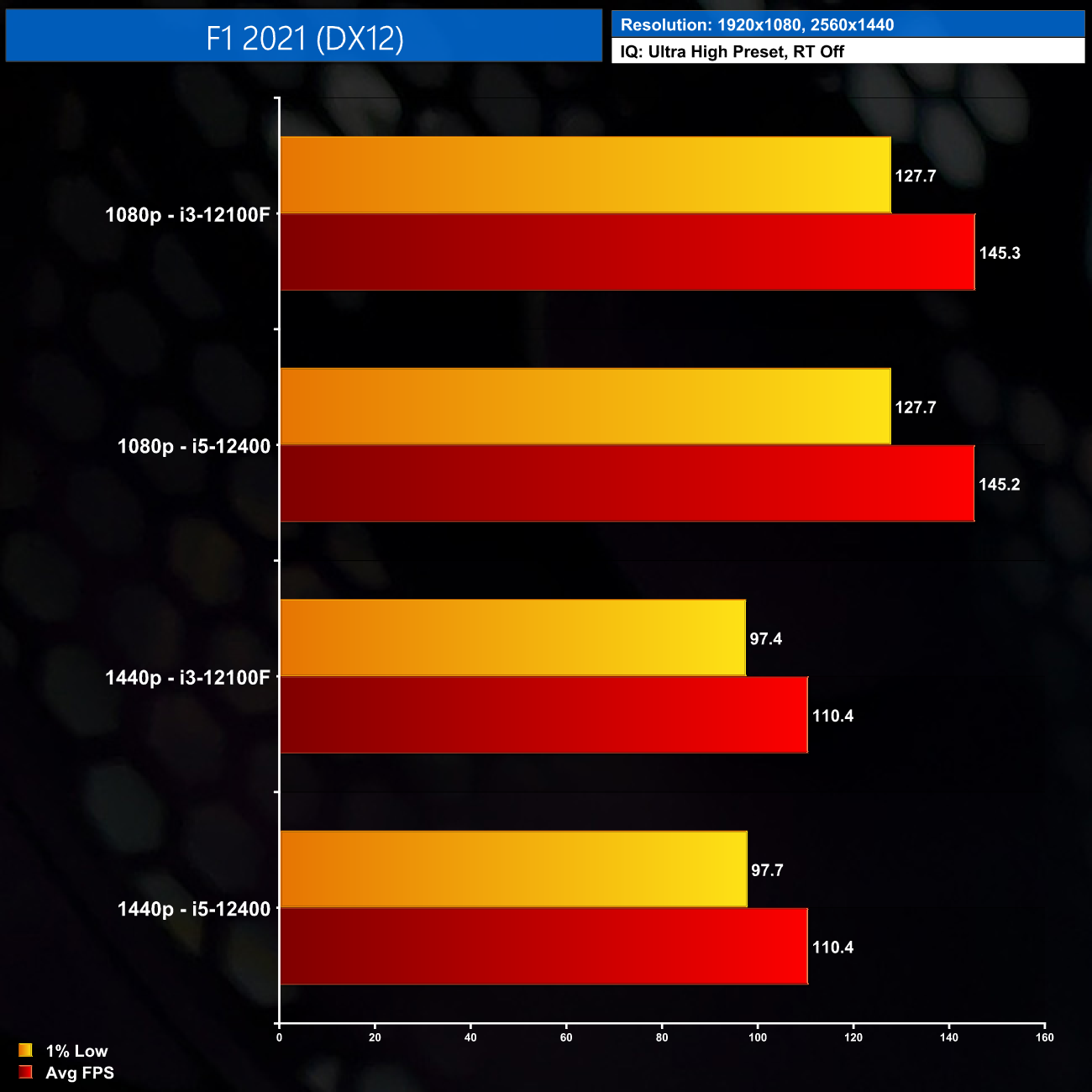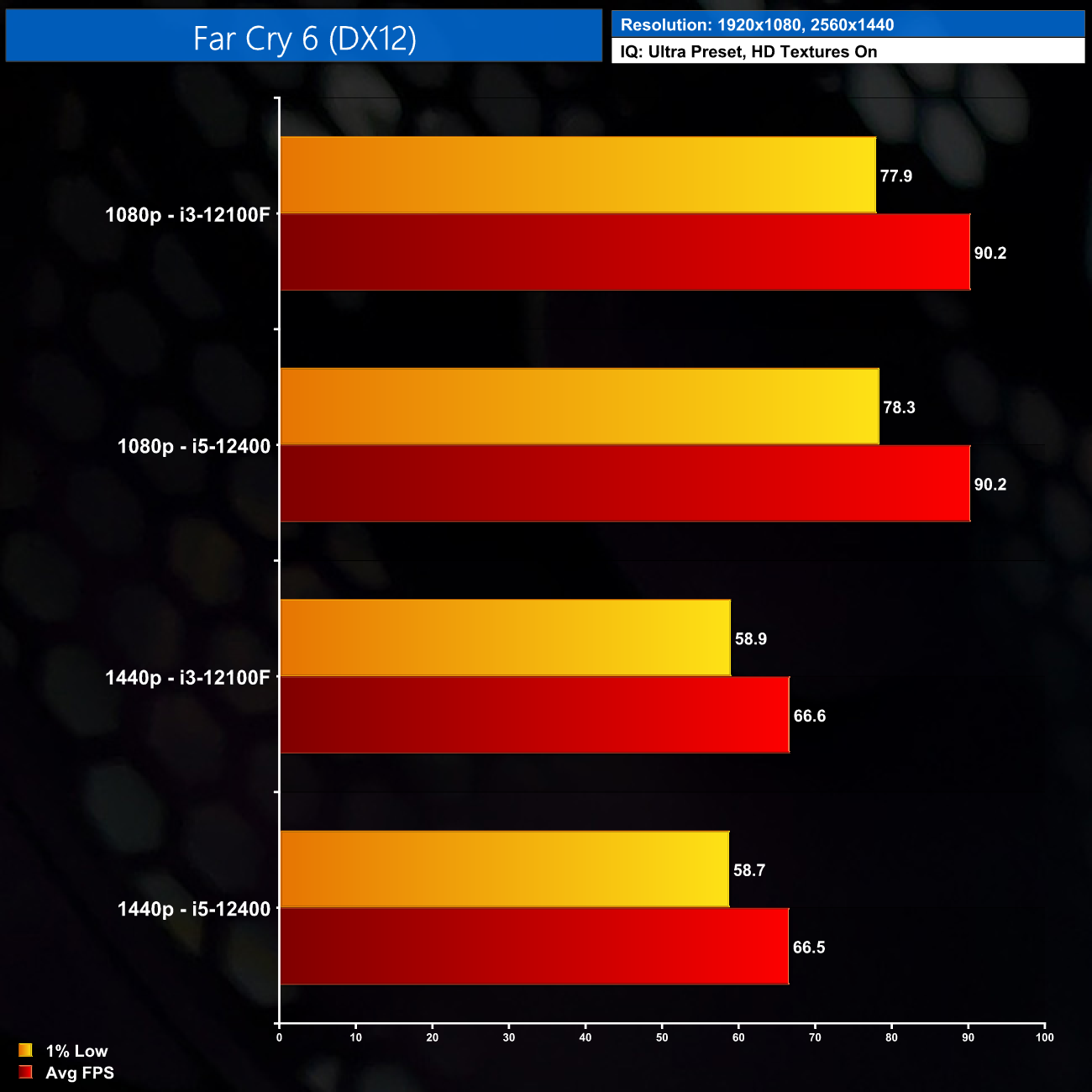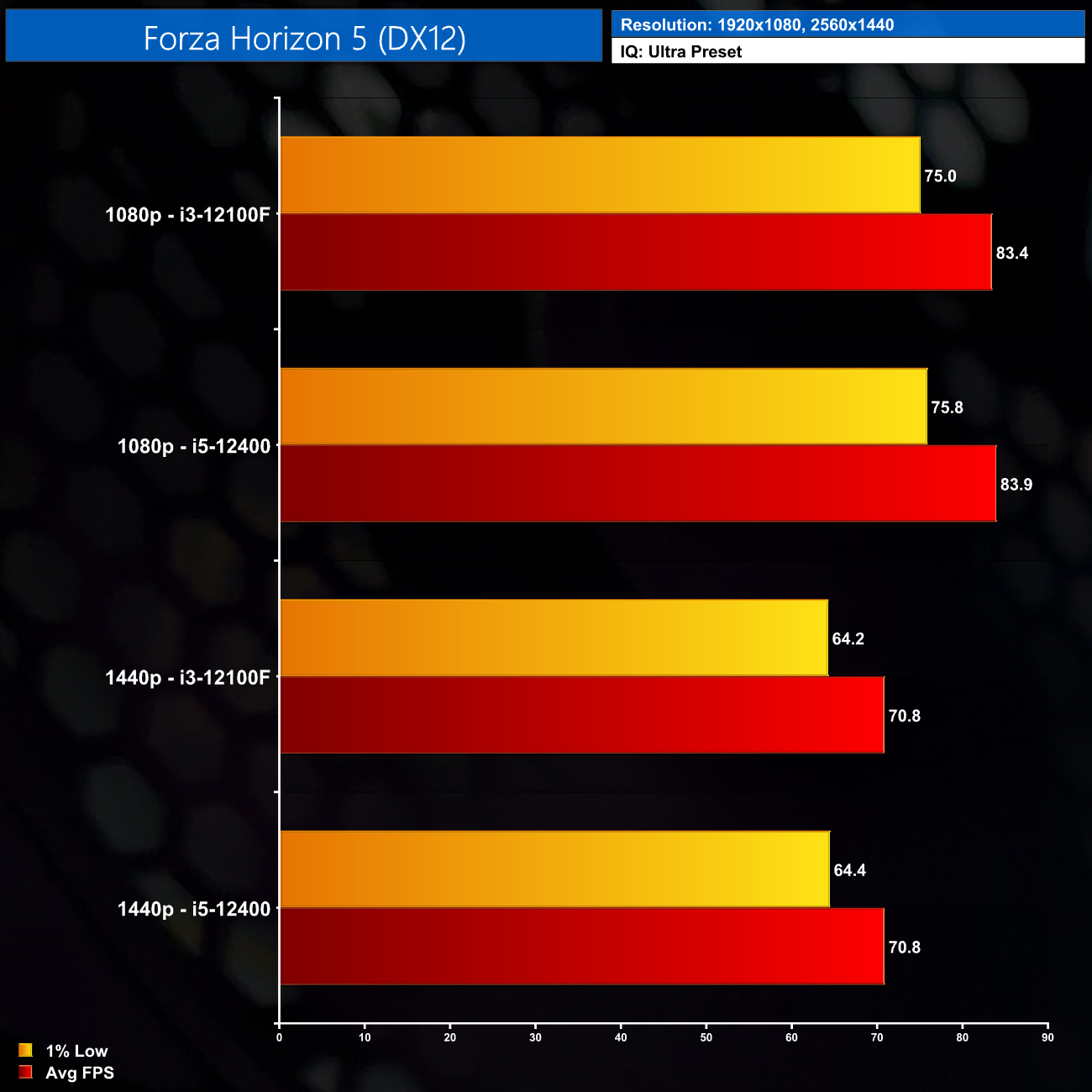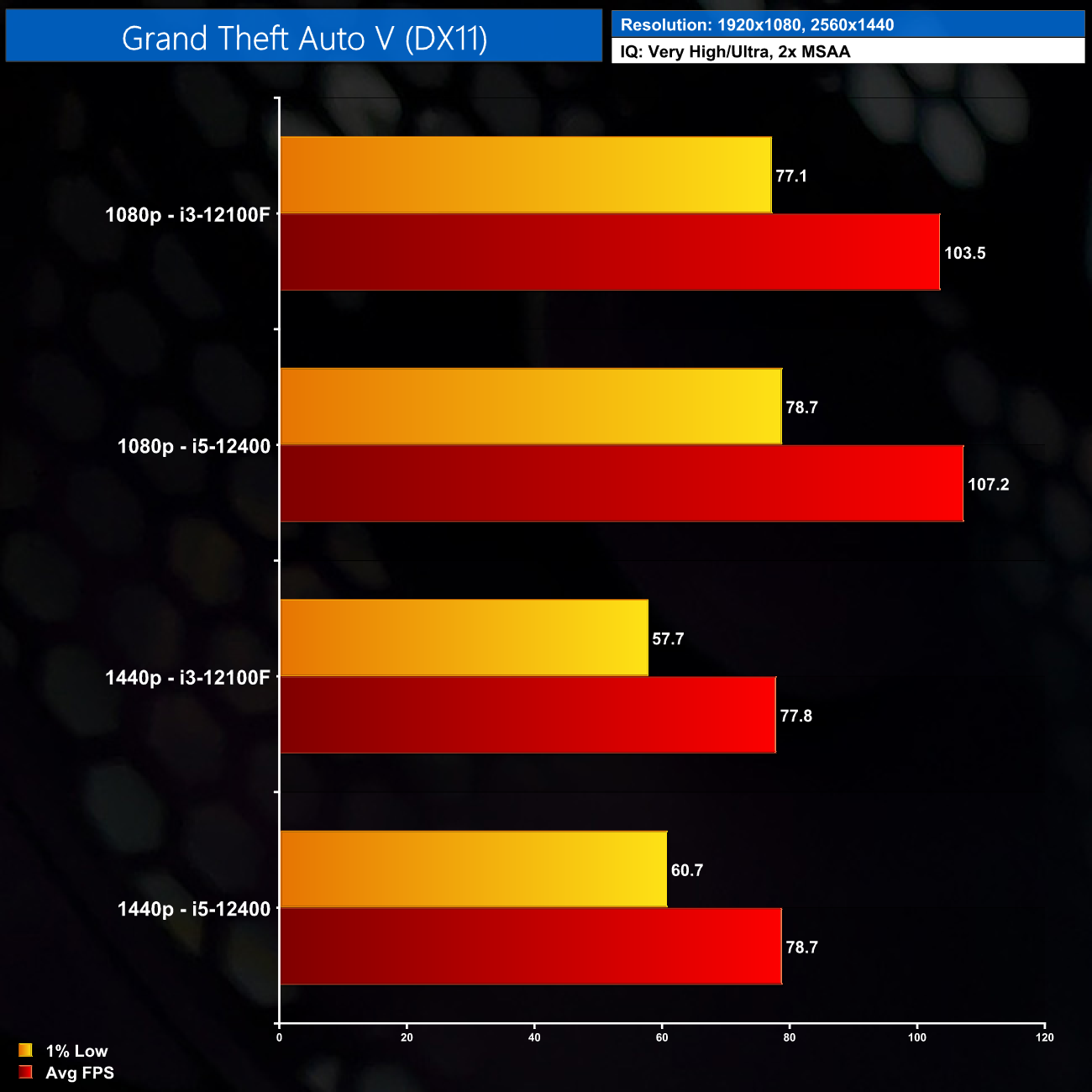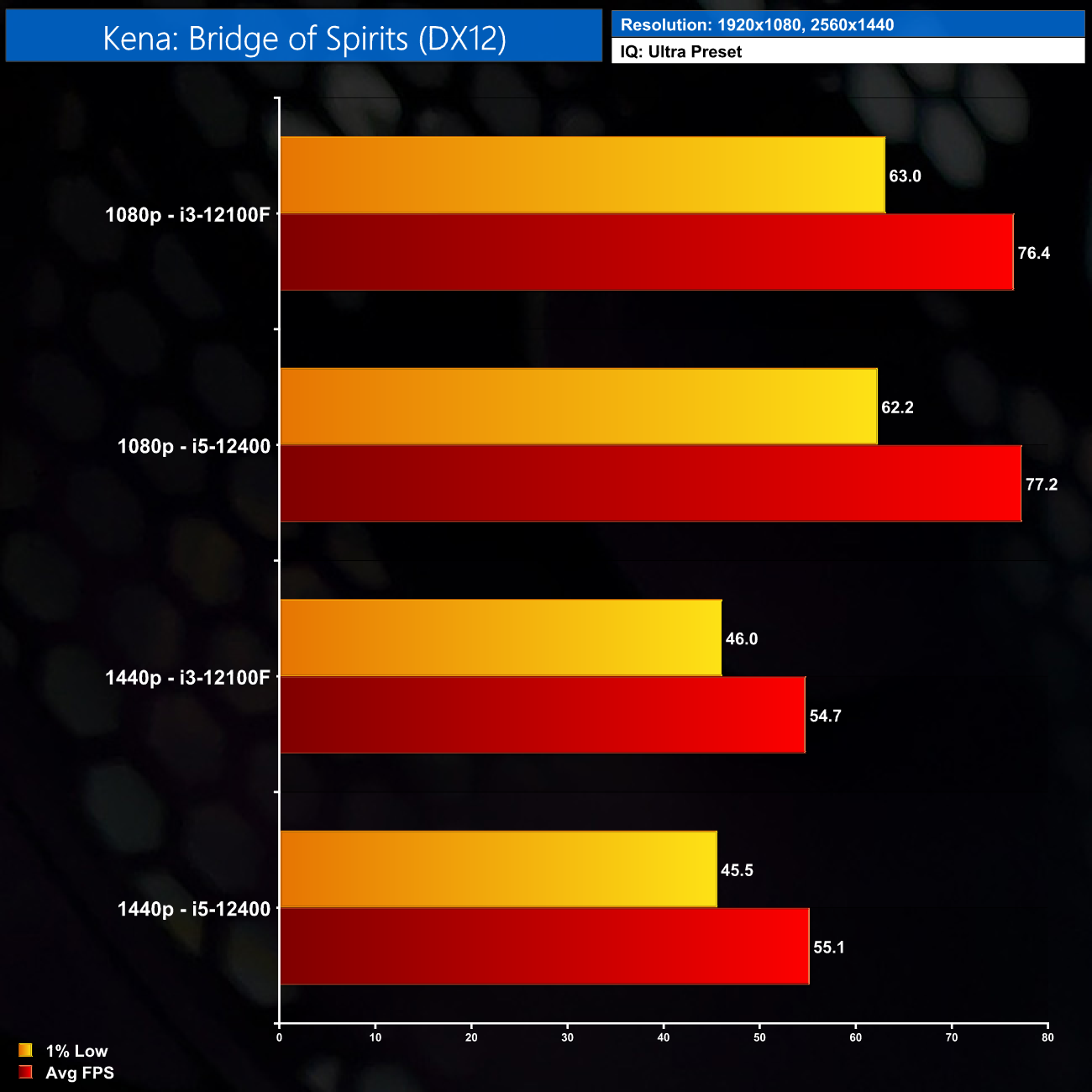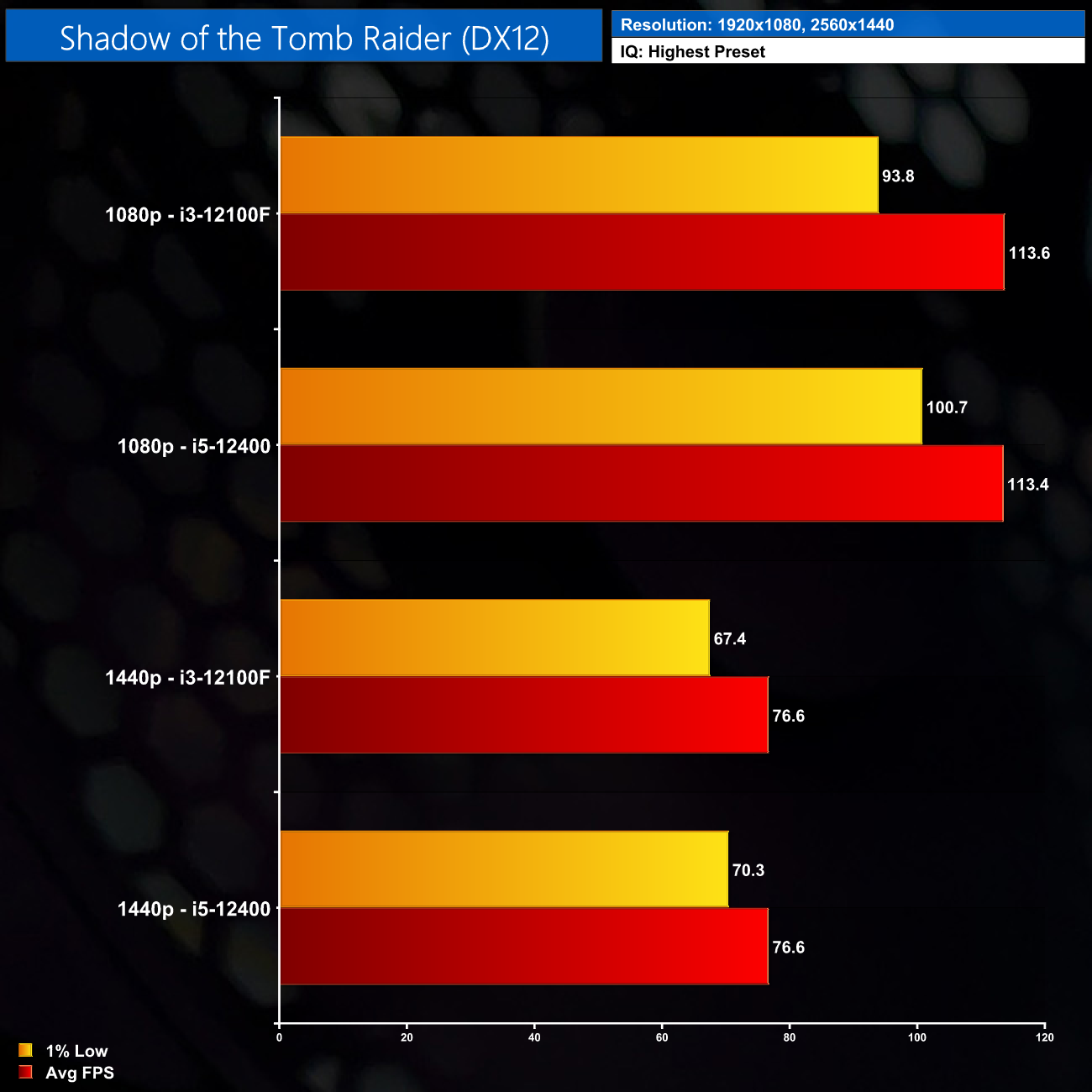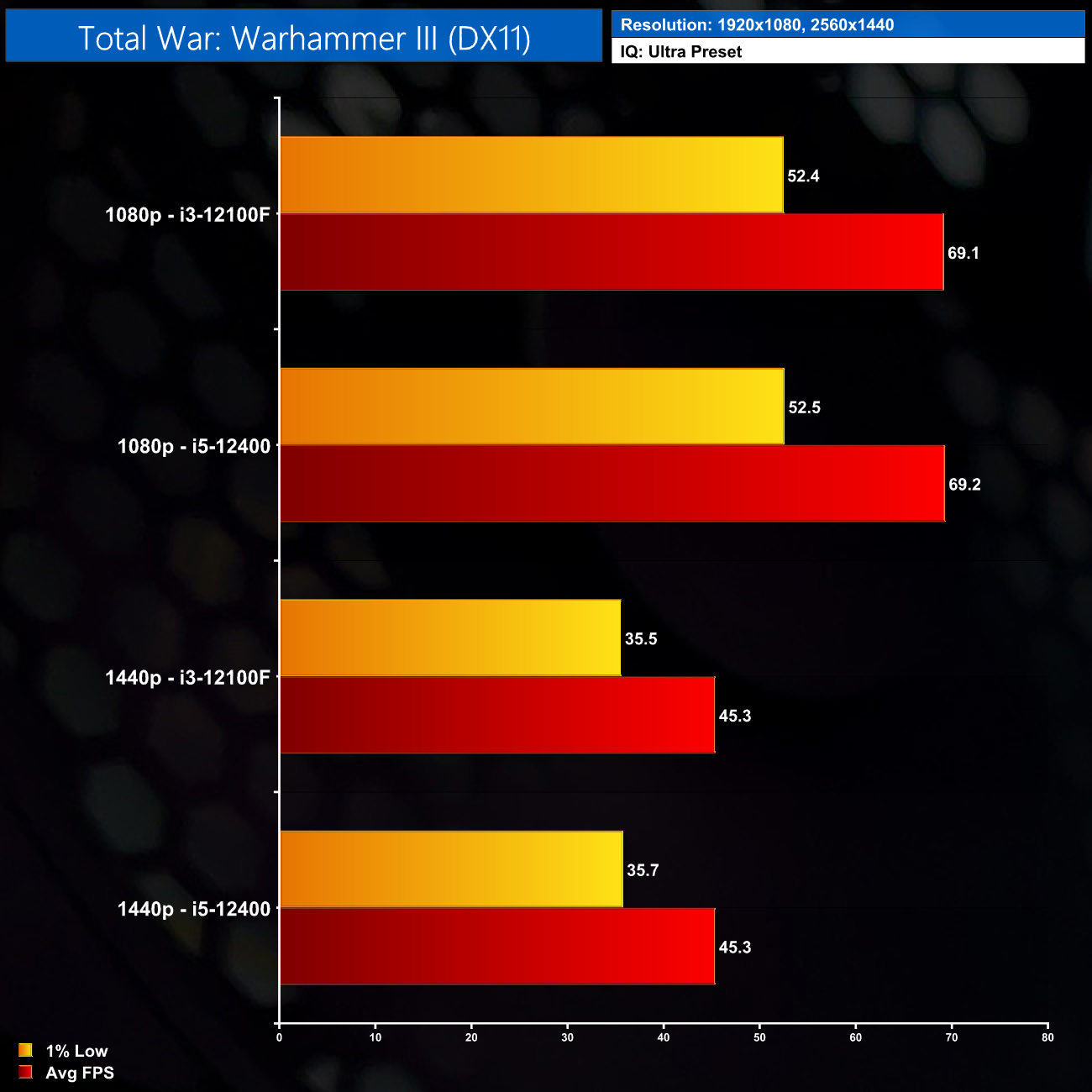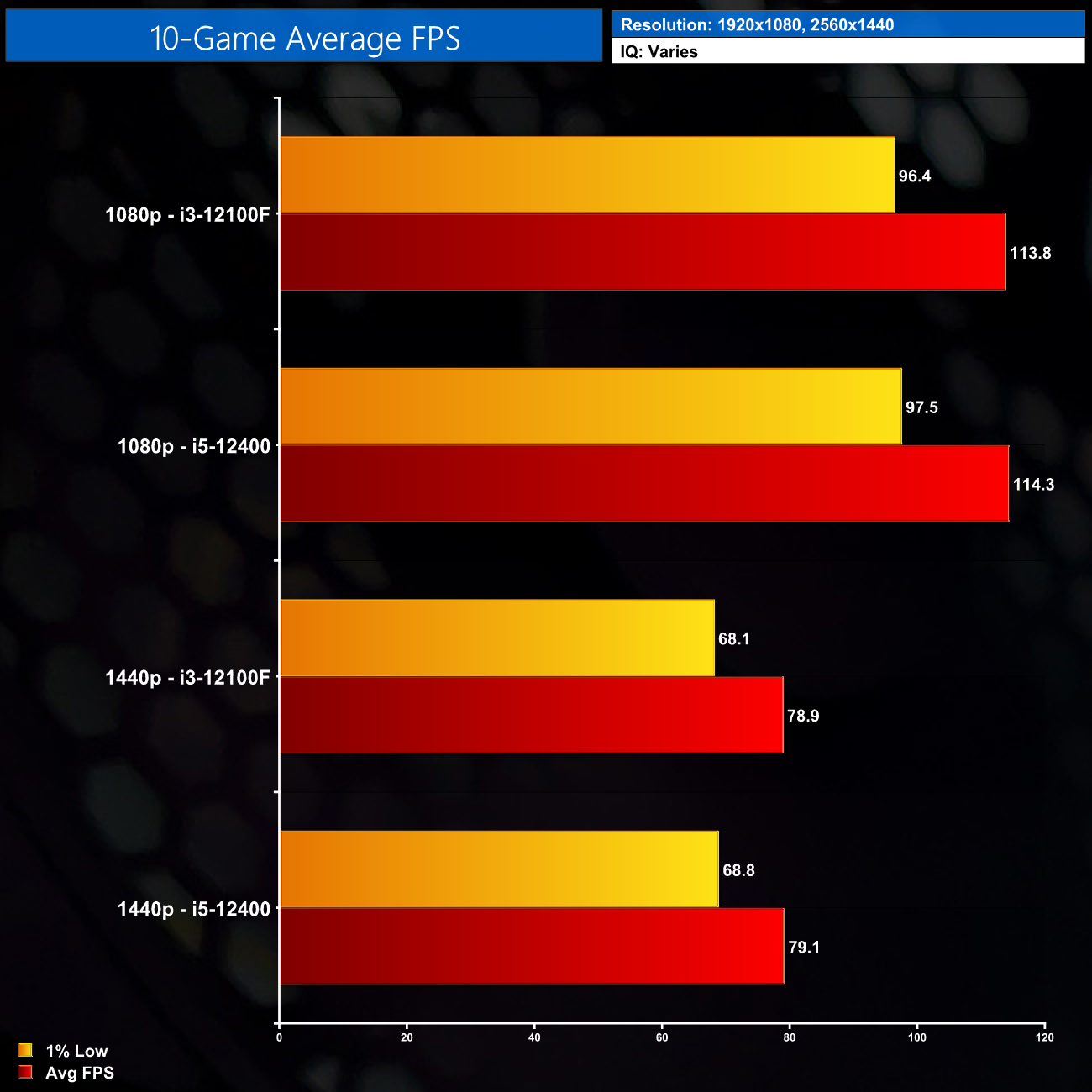Gaming benchmarks
As mentioned on the first page, when testing this system I was really curious to see how well an i3 would handle being paired with an RTX 3060. We know the Alder Lake architecture is impressive – but would we see any CPU bottlenecking?
To try and find out, I did some extra testing as part of this review. Firstly I benchmarked the system with the i3 and RTX 3060 over 10 games, at 1080p and 1440p. Then ,however, I physically swapped out the i3 for an i5-12400, which has two more cores and a slightly higher turbo clock. I then re-ran all my benchmarks, so we can see exactly what difference would be made upgrading to a higher core-count CPU.
Looking at these results, it quickly becomes obvious that the i3-12100F is more than a match for the RTX 3060 for both 1080p and 1440p gaming. In basically every game I tested, we just saw no difference in performance, with only marginal changes to the numbers based on run-to-run variance – so we are within margin for error almost all of the time.
I say ‘almost’ all the time as there are just two examples where we saw a slight improvement to the 1% lows when using the i5 CPU – those examples being GTA V at 1440p, and then Shadow of the Tomb Raider, but even in those cases the i3 was still perfectly playable.
Performance summary
Overall, for the ten games we tested, you can see just how little of a difference upgrading the CPU made; we see just a 1% average change to the 1% lows, and an even smaller difference for the average frame rate.
Of course, these numbers can only take into account what gaming performance is like today – it is hard to say with any certainty how much will change in a couple of years, and if the i3 will struggle a bit more down the line. Right now, however, for those looking to extract maximum value, the 12100F has shown itself to be a cracking quad-core CPU for gaming.
 KitGuru KitGuru.net – Tech News | Hardware News | Hardware Reviews | IOS | Mobile | Gaming | Graphics Cards
KitGuru KitGuru.net – Tech News | Hardware News | Hardware Reviews | IOS | Mobile | Gaming | Graphics Cards


